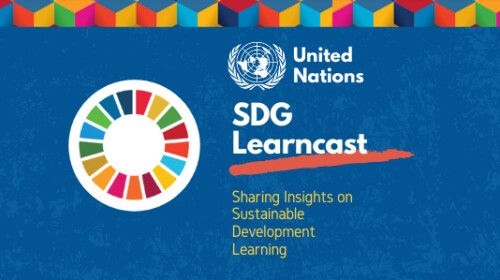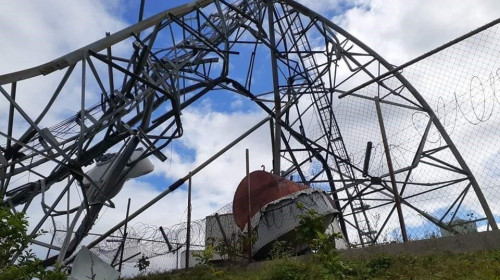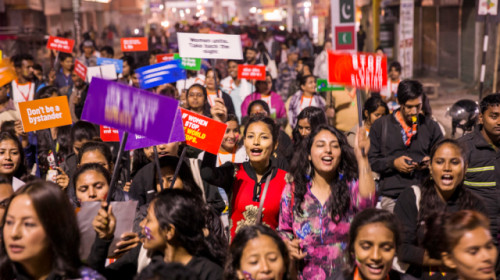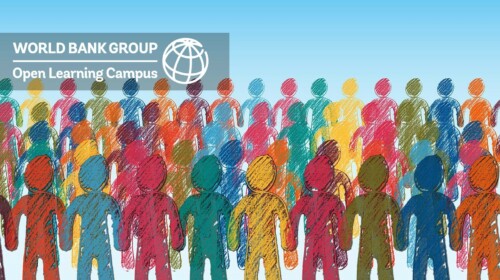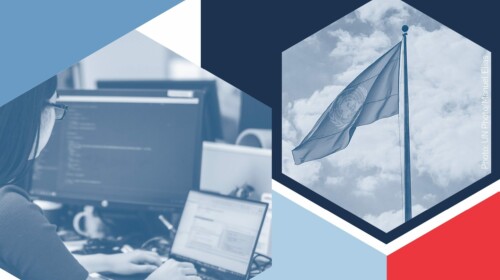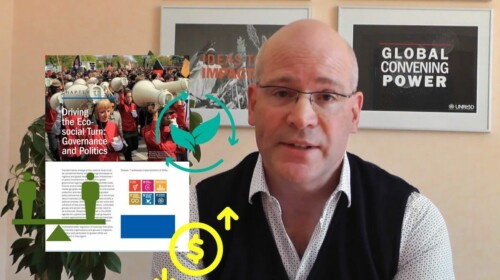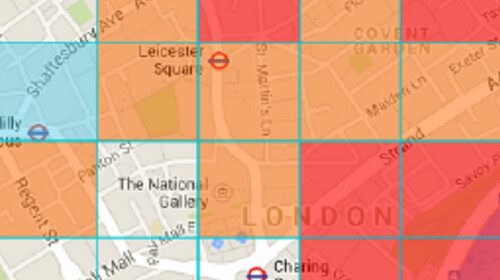Misinformation and disinformation are pressing public issues. There has been a rapid spread of misinformation and disinformation. Sometimes we call them fake news. This happens online and offline and it affects everyone, every day. Receiving truthful and quality information is critical as we all depend on information to make decisions.
At the personal level, we need accurate information to make decisions about health and who we vote for. And at the global level, we need established facts to make collective decisions on pressing issues. Such as pandemics climate change and resolving conflicts. The UN Secretary-General and his report ‘Our Common Agenda‘ called the large-scale spread of disinformation and the undermining of scientifically established facts as an existential risk to humanity.
In this episode, we will be speaking with Dr. Julian Jaursch, Project Director at the SNV in Berlin, working on Strengthening the Digital Public Space.
Want to learn more about sustainable development and learning? Subscribe to SDG Learncast on podcast apps.
[Transcript of the podcast]
Paulyn Duman: Welcome to the SDG Learncast with me Paulyn Duman. In every episode, I bring you insightful conversations around the subject of sustainable development and learning, helping us all to achieve a sustainable future.
Misinformation and disinformation is a pressing public issue. There has been a rapid spread of misinformation and disinformation. Sometimes we call them fake news. This happens online and offline and it affects everyone, every day. Receiving truthful and quality information is critical as we all depend on information to make decisions.
At the personal level, we need accurate information to make decisions about health and who we vote for. And at the global level, we need established facts to make collective decisions on pressing issues. Such as pandemics, climate change and resolving conflicts. The UN Secretary-General and his report ‘Our Common Agenda’ called large-scale spread of disinformation and the undermining of scientifically established facts as an existential risk to humanity.
In this episode, we will be speaking with Dr. Julian Jaursch, Project Director at SNV in Berlin, working on ‘Strengthening the Digital Public Space.’
Julian Jaursch: My name is Julian and I work at SNV. I’m a Project Director there. It’s a not-for-profit tech policy think tank in Berlin, Germany, and our work is generally at the intersection of tech and society. And this is also how I got to deal with disinformation because it is at that intersection.
I focus mostly on online platforms and on the rules that these platforms come up with but also that governments come up with in how to deal with some of the challenges that we see online and a lot of societies, and one of these challenges is the spread of disinformation.
Paulyn Duman: What do you mean by disinformation and how is this different from misinformation and fake news?
Julian Jaursch: It is different from fake news. Yes. To answer that question first. At SNV and I think also in a lot of other organizations, we do try to not speak about fake news anymore. I think the term has lost a lot of its meaning. It’s most often used now to just discredit statements that one doesn’t agree with.
So disinformation would be the false or misleading information that is meant to deceive or to harm the public. And that already is different from misinformation, which might also be false or misleading information, but it’s inadvertently. It’s not on purpose that it harms or deceives the public.
To me, it’s helpful to think of disinformation as a deception and there’s different types of disinformation and different types of deception, of deceiving people. So one very straightforward thing is it’s just a false message.
And there was a study that we had at SNV a while ago, examining a lie that refugees coming to Germany would get a free driving license, where Germans had to pay for it. That’s just a false piece of information. It’s a lie. It’s made up. It wasn’t true. And it fueled an already emotional and at times, biased conversation about migration.
Another example, deception doesn’t have to just deal with content, right? It can also be that someone pretends to be someone else to stoke controversies, fear, anger. And that happened as an example, during the 2016 US elections. There were posts online, supposedly from pro-gun rights and anti-gun rights people or groups, and these posts were meant to get these people on the streets and fight with each other and talk to each other. It turns out they came from the same source. But it just goes to show, it’s not just about the content it’s also about who’s behind it.
So for instance, if you have any type of message and it, supposedly, is spread by dozens of people, hundreds of people, thousands of people, but it’s actually just a few accounts who pushed these message, whatever it may be. That’s also deception. That’s also disinformation because you pretend to have a mass movement behind you when it’s really just a minority of people.
Paulyn Duman: Disinformation has been taking place in the past with the emergence of television, newspapers, radio, and other means of communication. Can you give us your insight or perspective on why this information is so important right now? Why do we talk so much about it and why should we care?
Julian Jaursch: First of all, I agree with you. It’s really important to acknowledge that disinformation has been around for ages and in different media. So I think that’s a good reminder that you gave and it also shows that online platforms or messengers, they don’t cause disinformation.
They’re not the root of this, but they might amplify it though, and they might make it easy to spread. And that leads over to your second question. Why do we talk about it now? The scale and the type of distribution when it comes to disinformation, that has just changed online.
A piece of disinformation in a local, 1950s radio-TV show could certainly be harmful. No question. Now, though, a piece of disinformation, it can spread wider and faster. It can originate from way more people and if the platforms don’t do about it online, it could even be amplified by the very system designed to reward virality online. That answers hopefully somewhat of the question of why do we talk about it now so much when it has been around, but you also ask why should we care? And I think that’s a good question.
There’s an argument to be made that disinformation has been around forever. We just need to deal with it, don’t exaggerate it because then you’re only playing into the hands of the bad actors, you playing into the hands of the platforms as well, who already have so much power. So, that’s just, why do we care? The other side though, is that disinformation, it can really hurt people, especially marginalized groups that have historically been negatively affected by disinformation spread around them individually, or them as a group.
And in times of crisis, wars, pandemics. This might even be more pronounced. And in addition to that, everybody else also feels that, disinformation really has risks. The deceptive ads about miracle cures, racist disinformation about viruses, stuff like that. It’s very clear that there’s a harm site to this disinformation.
And that’s why I personally think society should care and they should find a balance between those viewpoints. That means acknowledging the risks for individuals, for societies, especially from marginalized people. And it also means not being alarmist and viewing disinformation in realistic terms.
Paulyn Duman: It’s good that you also talked about the vulnerable groups because this podcast SDG Learncast is focusing on the 2030 Agenda and the sustainable development goals. Could you share where you see trends or areas where disinformation is having the most impact?
Julian Jaursch: There are definitely connections to a lot of the sustainable development goals. One example, there’s been a lot of disinformation about the science behind climate change, and that can potentially affect the goals on climate action, on sustainable cities, and clean energy.
A lot of disinformation, at its core, is playing off of inequalities, discriminations in society, going back to the example that we talked about when it comes to migration in Germany. This type of disinformation about supposed migrant freeloaders. It just wouldn’t work. It wouldn’t work if people didn’t feel the need to disparage others, if there wasn’t this discrimination and inequality in society and the same goes for a lot of racist and sexist tropes.
One last thing that comes to mind is a strong institution. What comes to mind here more concretely,it’s like elections, right? Dealing with disinformation about the voting process, about voting rights, about the election outcome, that can be crucial to achieving that goal of justice and a strong institution.
Paulyn Duman: These are clear examples where we see a lot of disinformation. We have been receiving a lot of memes and pictures, just going around. When I open my social media apps. I just see a lot of messages from different people, from my friends, from family members, sharing information, which I thought where did they get this from? And why is this spread so widely? And I think this is really important to address because it affects our family members, our friends, and our communities. In your opinion, can education contribute to addressing disinformation? And if so, how?
Julian Jaursch: Education is a crucial piece of the puzzle in addressing disinformation. There’s just a lot of pieces that need to fit together to deal with this information. In my opinion, there’s just not that one solution that you can find, and then you can magically deal with disinformation.
So for example, I do think certainly people have to take some of their own responsibility for their news habits to a certain degree. High quality journalism is really important. But platforms have a huge role to play. Regulation in my personal view also is important, not for disinformation as such, but to create transparency around platforms, to allow researchers to understand how platforms work, how disinformation spreads.
And then another piece of the puzzle is education, and this is not just education about how to use a computer, what’s a social network. It’s about civic education. It’s about news literacy. So for instance, giving people a basic understanding, how does the news work, how are news being made? How do platforms function? How do political institutions work? What types of human biases affect our behavior online and offline? All of these are really important things in dealing with disinformation and education can play a huge role across all ages for all parts of society in helping understand that better.
Paulyn Duman: Can you share some tips to our listeners, on how they can deal with this information in their daily lives? It just faces us every day. We receive all types of disinformation. And it’s really time to move away from fake news.
Julian Jaursch: I’ll try my best to summarize some of it. When I stumble across a post, video, image online that just doesn’t seem right, or it makes me react in a certain way, it’s sometimes helpful for me to ask myself a couple of questions. First question is who else is reporting about this? Like are there fact checks already? If it’s just one person reporting about this, of course it could be a major scientific breakthrough or breaking news, but there’s also a good chance that it’s just an outlier and it’s just not true.
Has it been fact-checked and debunked? This is like the first thing to check.
Another thing to check is the story current? Sometimes there’s a current news event and it’s being put together with pictures or videos that are old and are completely taken out of context.
That’s misleading and it should be checked. Is the headline lining up with the content? Is the headline lining up with the image? Is that from the same story in the same kind of age, so to say.
Third question is who’s behind an article, who’s behind a post, an image, and that’s not to say that there are sources out there that are always right and other sources that are always bad and always wrong. Even the best journalistic outlets, they can make mistakes.
And the last question to me, the hardest one is what is my own reaction? Am I emotionally invested in this story in this video that I’m watching? And the reason is because disinformation often plays to human biases and often we want to be confirmed in our beliefs. It’s good to be aware of my own emotional reaction when I stumbled across some piece of content.
Paulyn Duman: We have been talking about tips for individuals on how to deal with disinformation. But how about for organizations, who would like to do more in this area? What can they do to fight disinformation and where can get resources?
Julian Jaursch: Just really checking ourselves with the questions that I tried to summarize, but then also like individual countries, in their local communities, oftentimes there are fact-checking organizations and they are on the ground.
They know the language, the cultural, the historical background of a certain news environment. And they check news or posts online. And this is different for every country, every region of the world. So maybe try to find like the local fact-checking organizations.
There’s also non-governmental organizations, civil society organizations, such as the EU DisInfo Lab based in Brussels, who’ve been working on this for a while, doing research, advocating for awareness around disinformation and publishing opinion, as well as educational resources.
And lastly, if people really want to dig into the academic side of things, there is a growing body of academic literature as well. Sometimes it’s labeled critical disinformation study.
For example, at the University of North Carolina in the US, this is more like academic debate around it. If you combine that, if you have your local fact-checking organizations, if you have, activists, that will give you a really good background on disinformation.
Paulyn Duman: And that was Dr. Julian Jaursch. I hope you took away from this conversation that misinformation is sharing of false or misleading information but without the intent to harm.
Disinformation is sharing of false and misleading information that is meant to deceive or harm the public. Fighting disinformation is critical because it can really hurt people, especially marginalized people and vulnerable groups.
Julian also warned us that disinformation impacts several aspects of the sustainable development goals such as climate change, clean energy, strong institutions, and inequality. He warned that actors behind disinformation are harboring discrimination in society and people having strong feelings to discriminate against others are more likely to fall victim to racist and sexist tropes.
In this regard, Julian highlighted that regulation of tech platforms has a huge role to play aside from people taking their responsibility for their information consumption seriously. It is important that each of us care about this issue deeply because the scope and speed of disinformation online are at a scale that is causing greater fragmentation in society.
Lastly, it is important to always pause and ask ourselves what is the source of news, images, and memes that we receive from family and friends. There are several organizations and activists at the national and local level that can help us fact-check the news and information we receive on a daily basis.
You can find more of the SDG Learncast on the UN SDG:Learn website. For now, I’m Paulyn Duman. Thanks for listening.
Paulyn Duman is the Knowledge Management, Communications, and Reporting Officer at the UNSSC Knowledge Centre for Sustainable Development and is a coordinator for the Joint Secretariat of UN SDG:Learn, together with UNITAR.
The opinions expressed in the SDG Learncast podcasts are solely those of the authors. They do not reflect the opinions or views of UN SDG:Learn, its Joint Secretariat, and partners.


